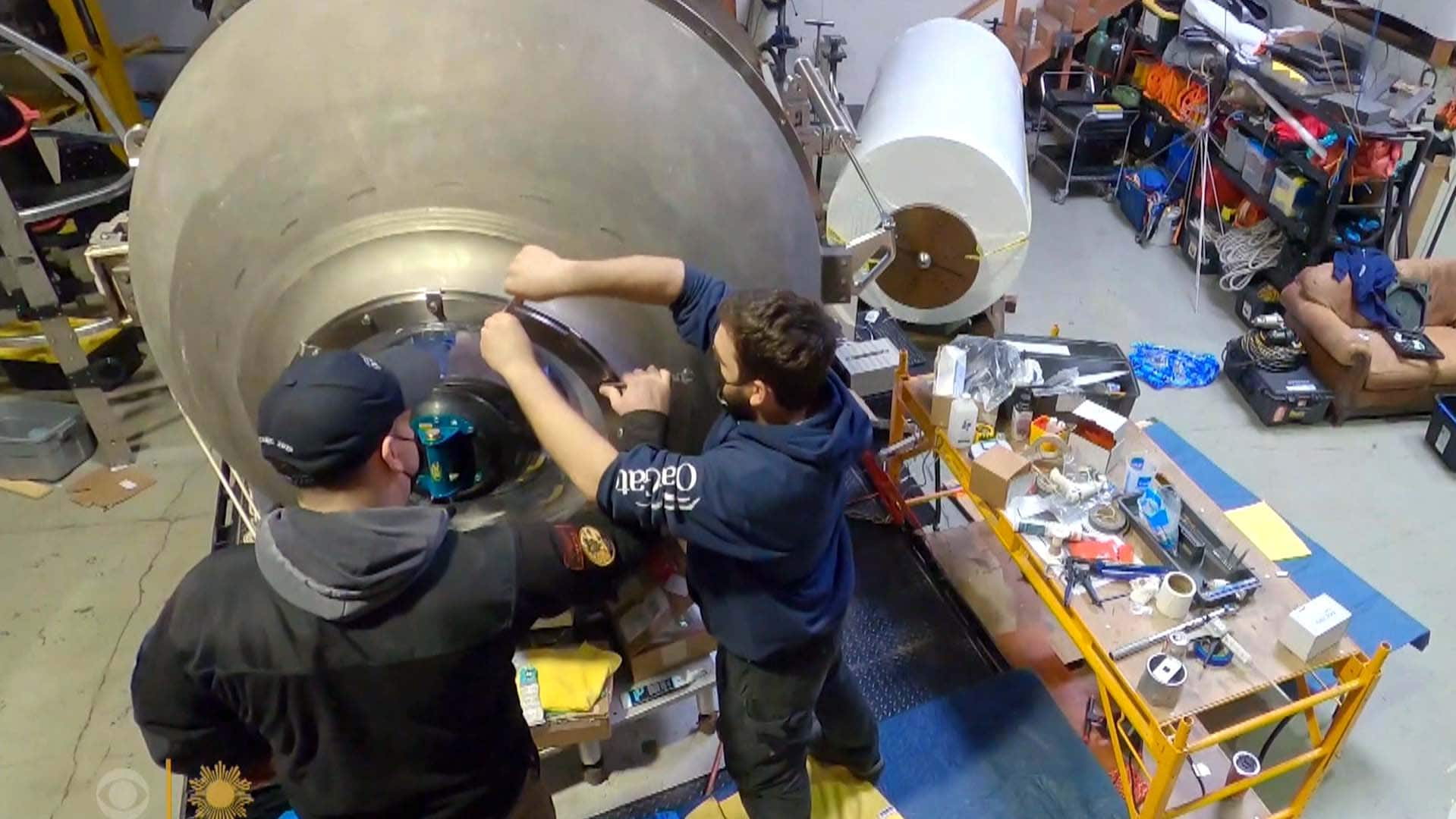There were no updates in the search for the missing submersible Titan overnight into Thursday morning — a stark quietness as the 96-hour window for a successful search draws closer to the end.
If the submersible is still intact, searchers expect its oxygen supply will run out on Thursday morning. Despite best efforts, and a few hopeful moments, the search has yet to turn up any definitive results.
The best hope to drag out their oxygen supply, unfortunately, might be the frigid temperature of the water.
“It does need to be remembered that hypothermia is also protective of the brain and heart, and as people get colder their metabolism slows down.” said Dr. Ken LeDez, a hyperbaric medicine specialist in St. John’s. “If alive and hypothermic, then oxygen could last longer.”
There was some hope on Wednesday when the United States Coast Guard said a Canadian plane had detected noise under the ocean, described as “banging” sounds. ROVs were deployed in the area where the sounds had been heard, but searches throughout the day turned up nothing.
“If it is a conscious banging, then if it stops that could be a sign they’re becoming less conscious and more incapacitated,” LeDez said.
The searchers have emphasized that the 96-hour window is only an estimate put forward by the company, OceanGate Expeditions. Multiple experts have spoken to the media in recent days about ways the crew could prolong their survival beyond that window.
“I want to emphasize — even if they lose consciousness, it doesn’t mean their medical condition is hopeless,” LeDez said. “We see critical events in hospitals all the time. Even if they lose consciousness from low body temperature and low levels of oxygen, it could still be survivable for some period of time that is difficult to estimate.”
Search continuing to grow
Three more ships arrived on scene early Thursday, including two that are carrying ROVs with the ability to search the ocean floor.
The Horizon Arctic delivered an Odysseus 6K, from Boston company Pelagic Research Services. The French ship l’Atalante also arrived at the wreckage site in the early hours and is deploying the Victor 6000. Both robots are able to dive as deep as 6,000 metres.
A U.S. coast guard spokesperson says they don’t know whether sounds detected from deep beneath the Atlantic are from the missing OceanGate submersible but they do think the sounds are human-made. It provides some hope to searchers and those assembled on shore in St. John’s.
The Canadian Navy ship HMCS Glace Bay is also en route and expected to arrive by Thursday afternoon. The ship has a six-person hyperbaric decompression chamber on board, which could be of use if the crew is found alive.
There’s also a remotely operated vehicle (ROV) en route from U.K. company Magellan, but it’s not expected to arrive until well after the crew’s survival window has expired.
The ROV can dive the full depth of the search area, having produced imaging of the Titanic in the past. According to the BBC, it won’t arrive for at least another 48 hours.
safety concerns about OceanGate’s ‘experimental approach’ go back to at least 2018, according to a letter from an industry group. The chair of the Manned Underwater Vehicles Committee says there is little oversight of the company, which operates in international waters.
Read more from CBC Newfoundland and Labrador







More Stories
Satellite built by N.B. students not responding a week after entering Earth’s orbit | Globalnews.ca
Cisco reveals security breach, warns of state-sponsored spy campaign
Ingenuity Mars Helicopter down but definitely not out | CBC Radio